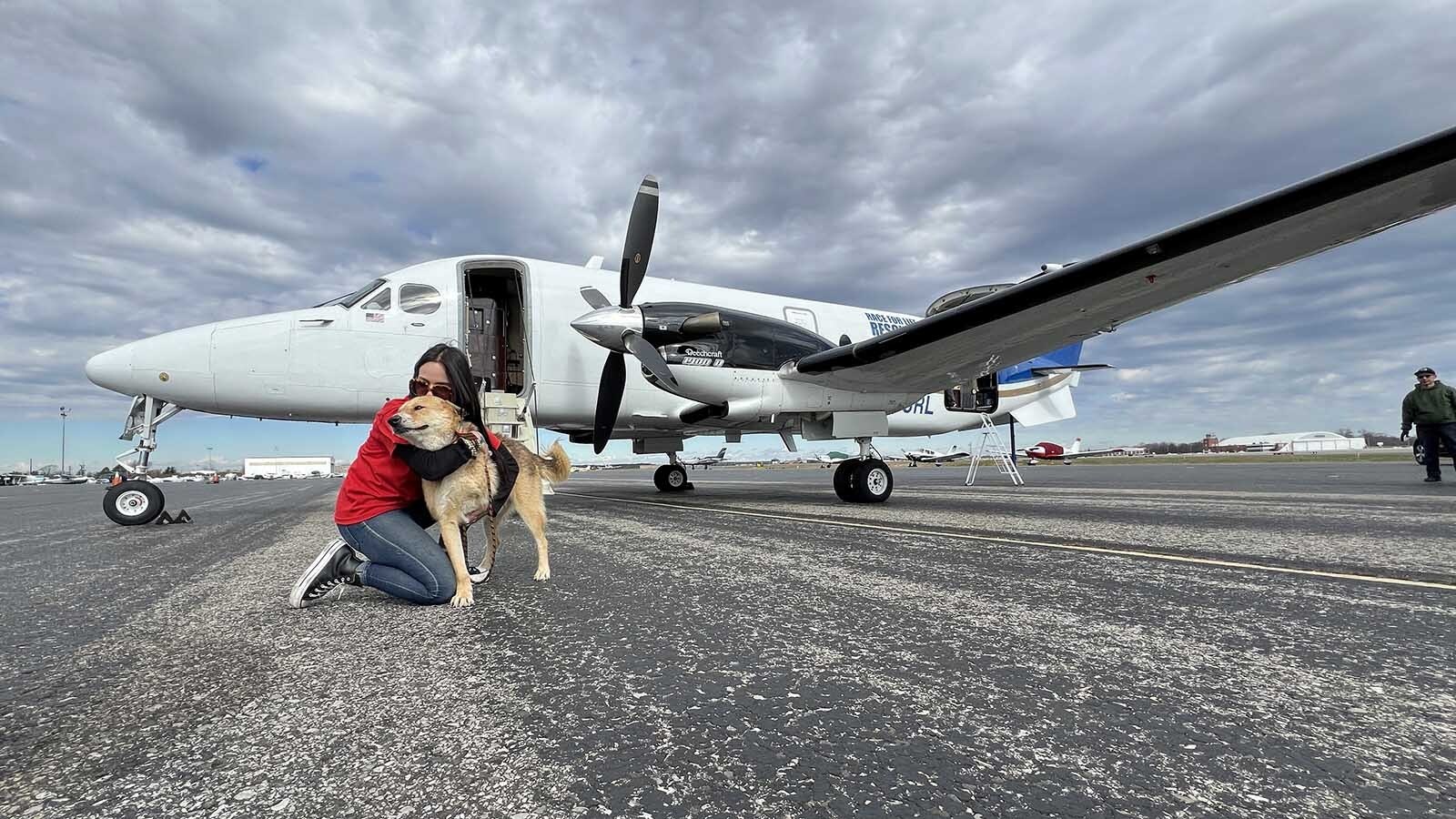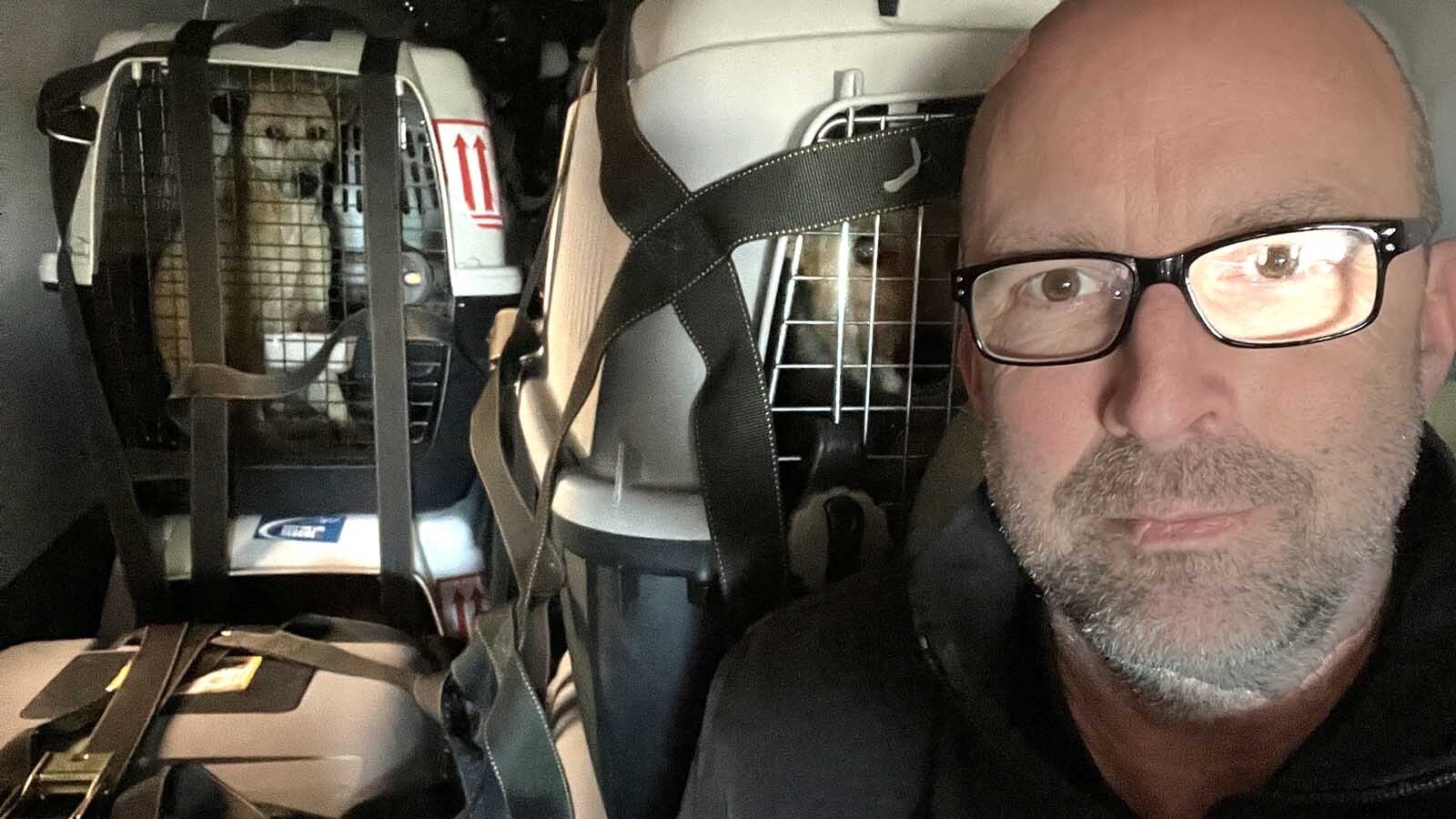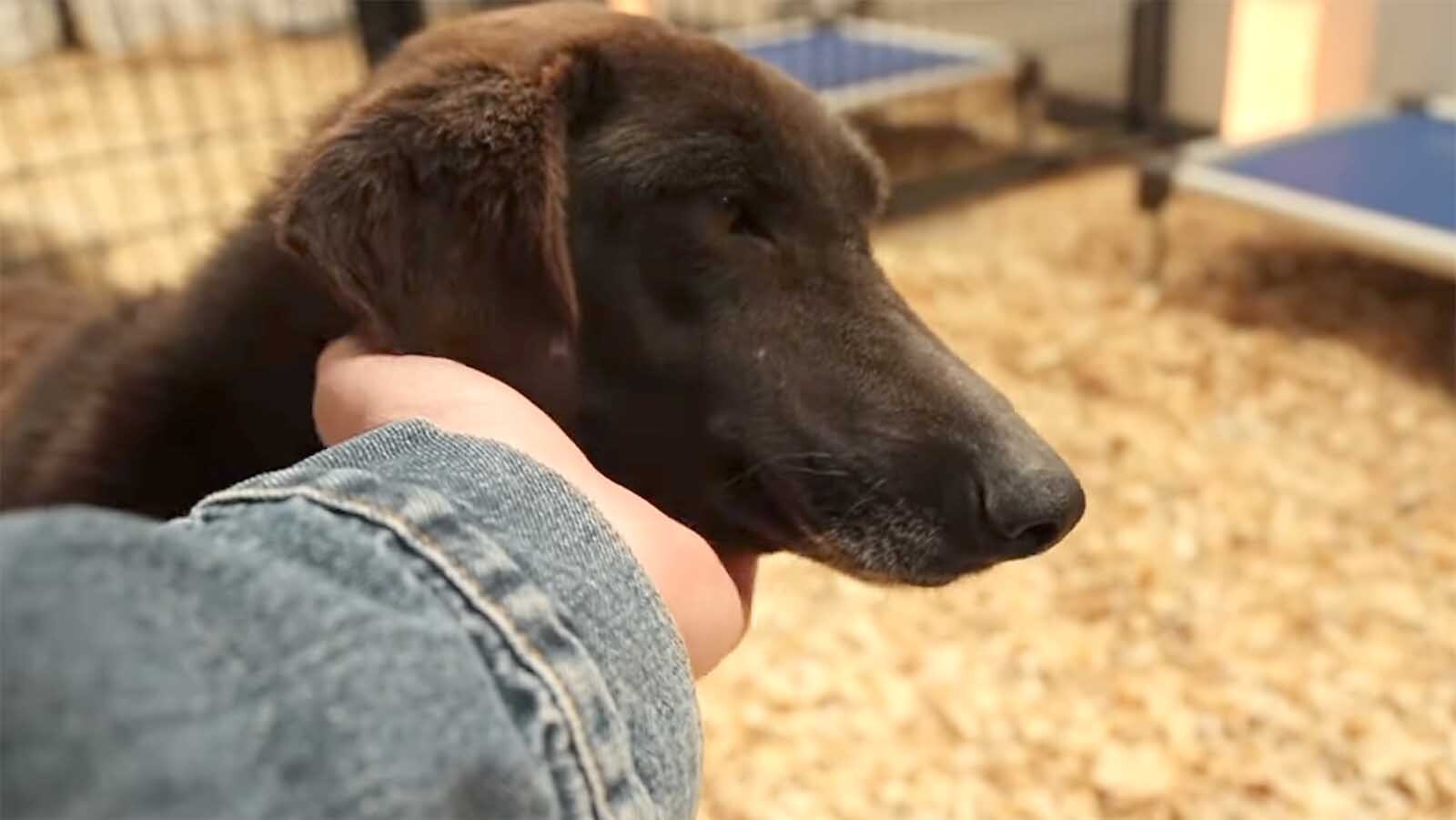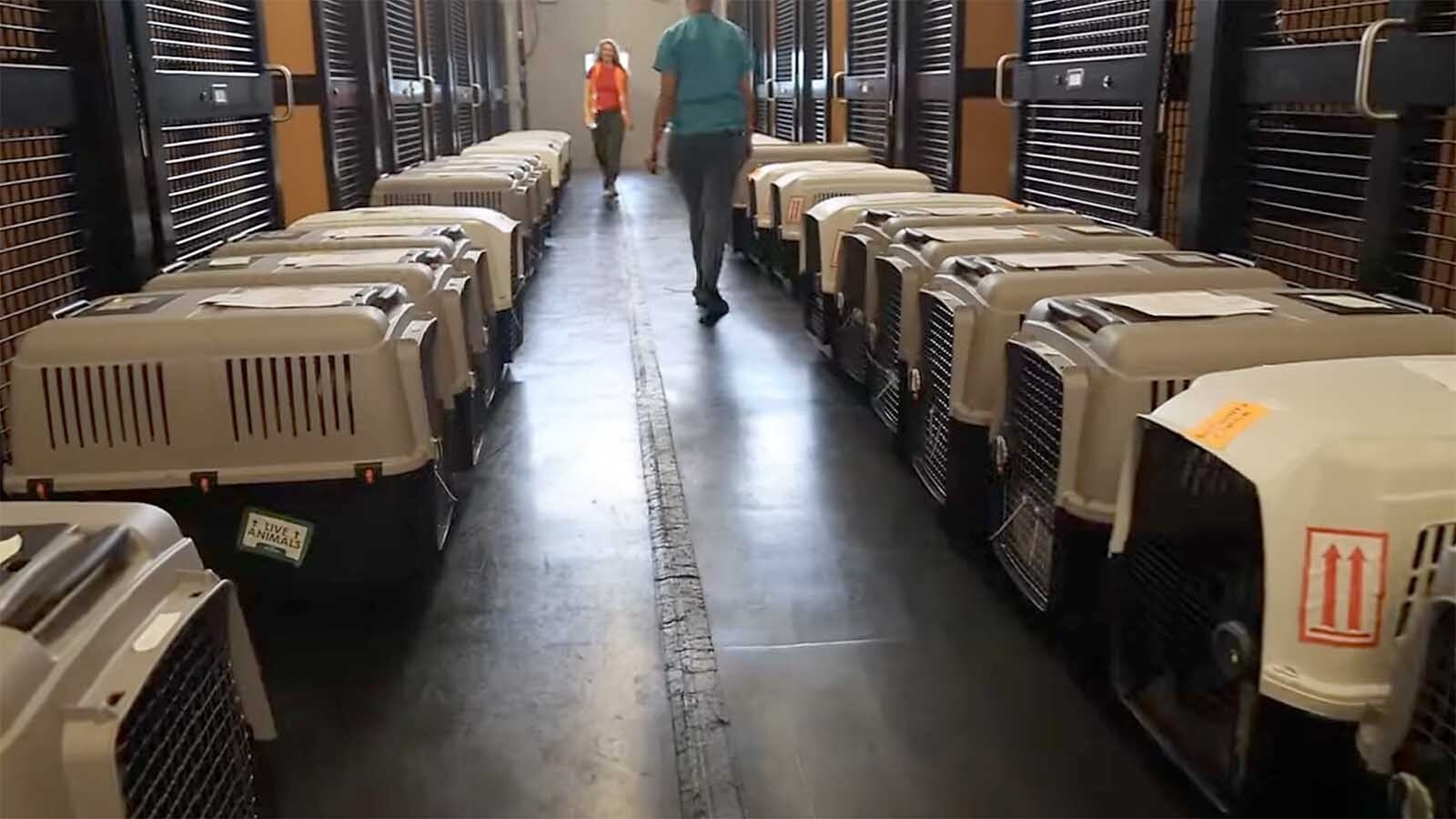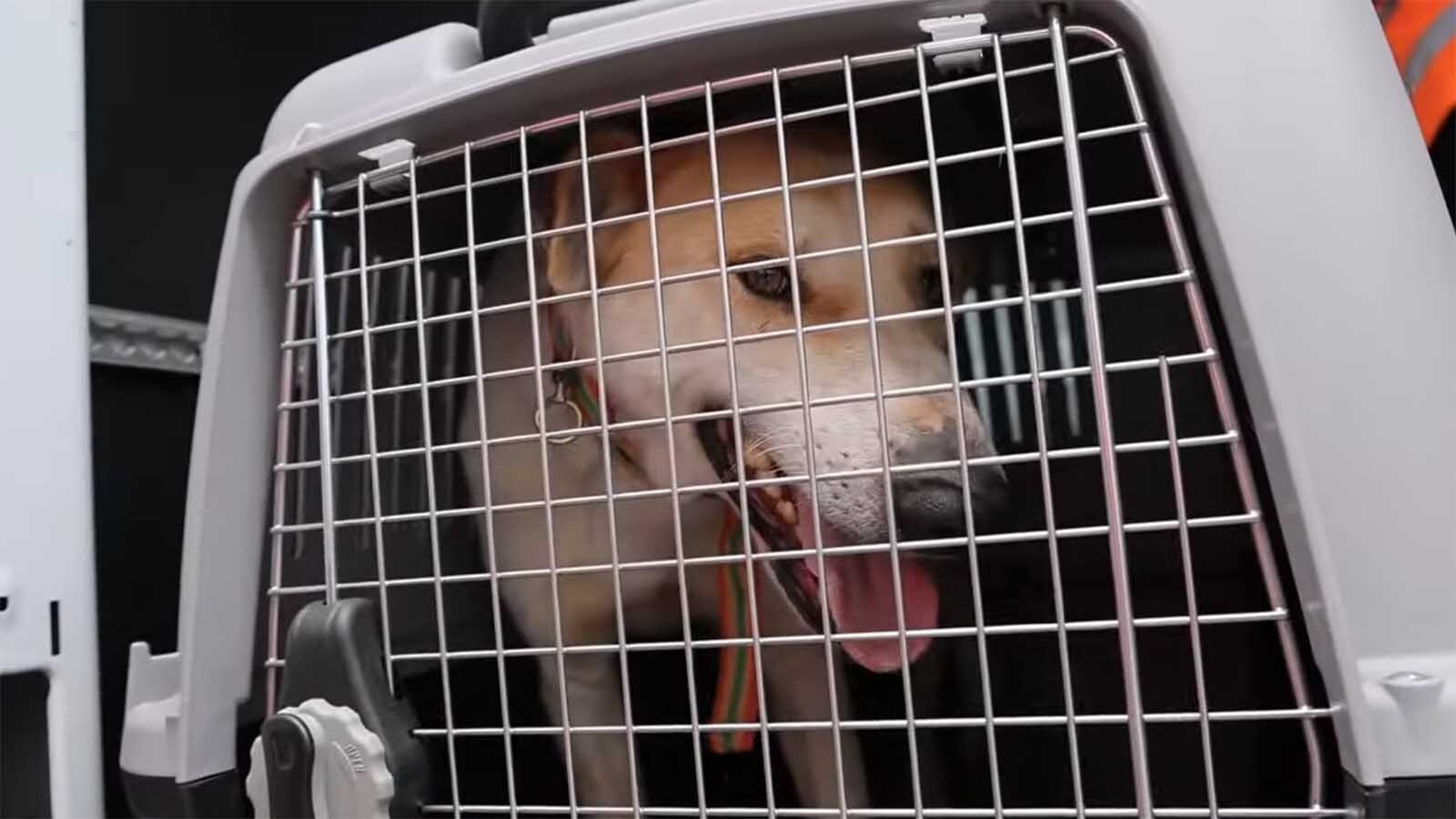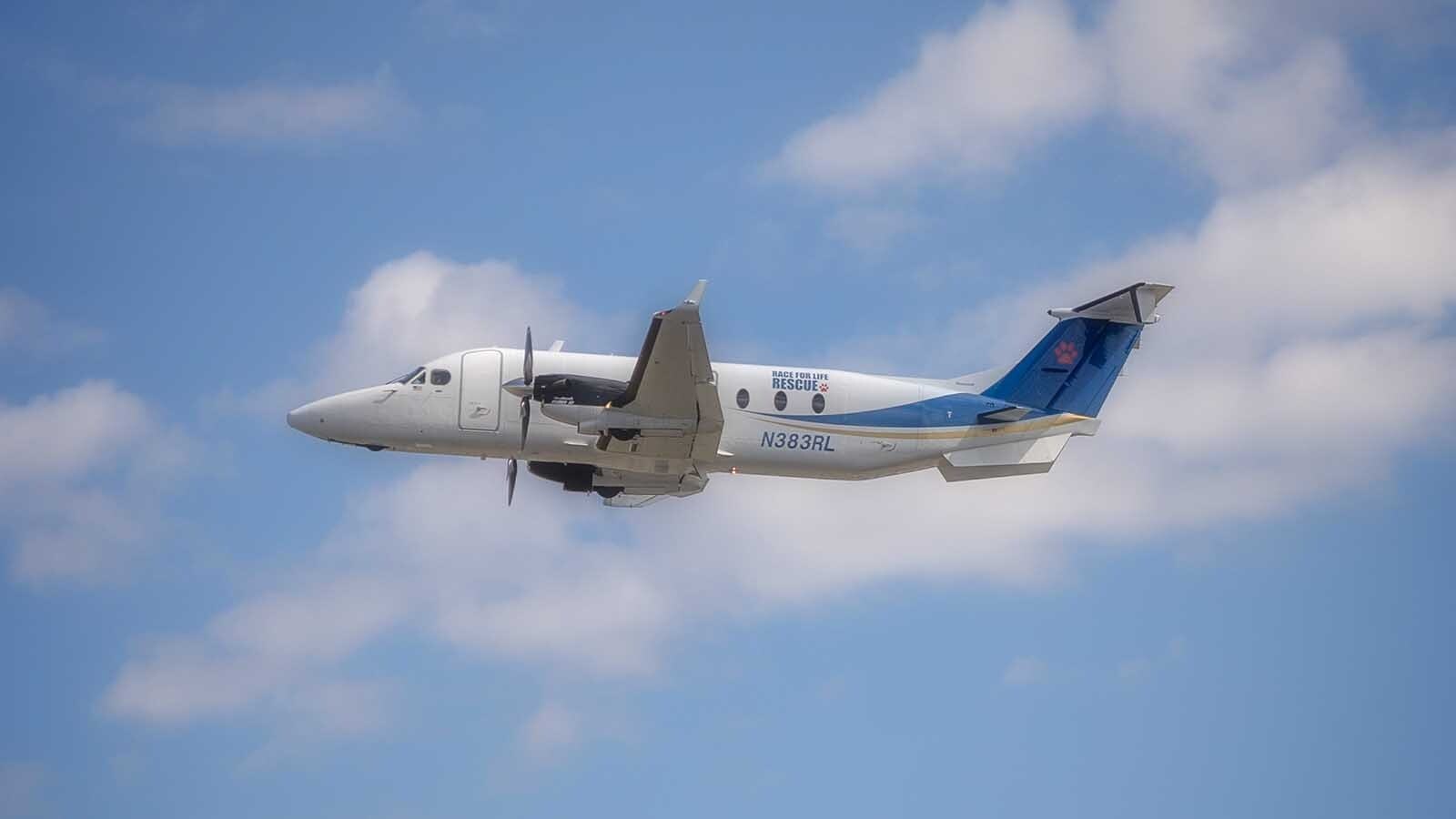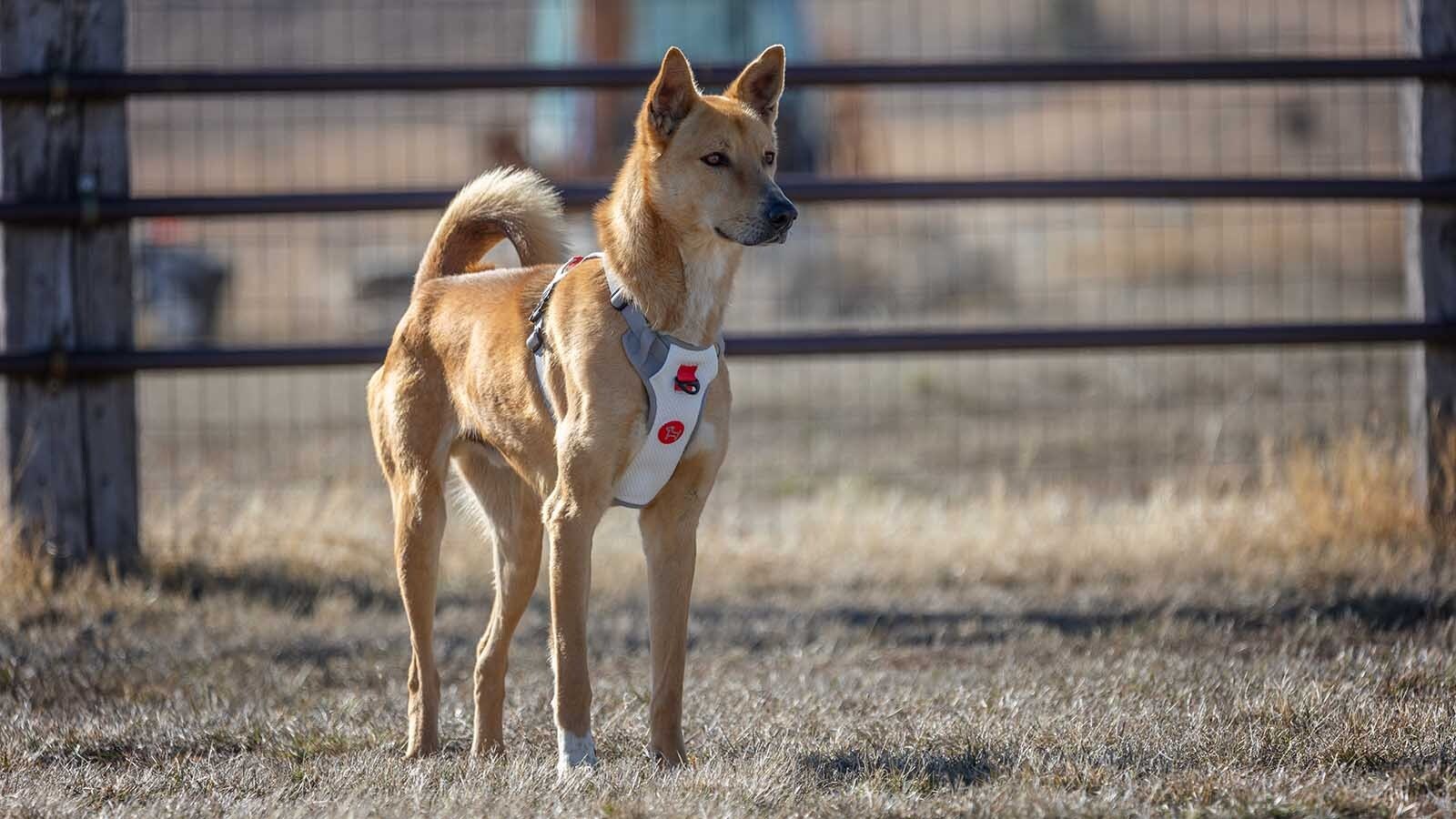HARTVILLE — Their injuries may not be visible, but the trauma shows through in vacant stares and the way they huddle in the corner of their kennels. These 10 dogs have been through a lot.
They’ve just flown more than 6,000 miles to Wyoming from the war-torn West Bank, where they were rescued as part of an international effort to give them a new beginning and safe life.
On Wednesday, the dogs peered out from individual kennels in the intake room at Kindness Ranch, a 1,000-acre animal sanctuary near Hartville, Wyoming, in the southeastern corner of the state.
It’s hard to imagine what they’ve already endured until this point. They’ve come from Israel and the West Bank, where they were rescued out of rubble after losing their owners or being taken off streets.
Some dogs appear to be acclimating faster than others, like a large tan dog of indeterminate breed that leaped against the kennel door with tail wagging when he saw Executive Director John Ramer walk into the room.
Ramer opened the kennel and Lucky immediately jumped up with paws on Ramer’s chest, who pet him in response. Lucky is one of the healthier, more socialized dogs in the group.
Others, like Brownie, shy away from humans or slink to a corner when a staff member opens their kennel doors. Some are missing limbs from being hit by cars or collateral damage of the humans fighting around them. One pup is nursing a recent operation to fix a broken leg with a platinum rod.
Kindness Ranch adoption coordinator Bridget Cameron and companion animal manager Howard Goldman sit on the kennel floors either petting dogs or allowing them to tentatively sniff them as they get more comfortable with their new surroundings.

Choosing To Help
Typically, the Kindness Ranch accepts only rescues from animal or clinical testing facilities or vet teaching programs. It’s the only sanctuary of its kind in the nation that focuses solely on these types of animals.
This means that the sanctuary tends to get a lot of beagles, which is the most common breed of dog used in testing.
Given the rescue’s stated mission, Ramer draws a hard line on accepting animals that fall outside of these parameters, making few exceptions — and only in emergencies. That said, his personal philosophy is to help in any way possible when it comes to disasters, natural or manmade.
“Disasters are only made worse when those that can help choose not to,” he said.
In this case, he got an email in December from Lori Kalef, program director at the Society for the Prevention of Cruelty to Animals (SPCA) International, who explained there were 70 dogs that needed rescuing from the war-torn Middle East region.
Kalef told Ramer she’d been referred to him by a friend in the animal rescue world and wondered if he’d help save the dogs.
His response: “This sounds interesting. We might be able to help.”
In truth, it was an easy decision. Not one to shy away from challenges, Ramer offered to take the small, shy ones that needed a lot of help as well as the three-legged dogs.
“Then I called our board and asked for forgiveness,” Ramer joked.
But he didn’t need to; they were also in support.
Harrowing Journey
Ramer, who just returned to Wyoming last Sunday after four 20-hour days and very little sleep, said the effort to get the dogs out of Israel was fraught with obstacles and delays.
Along with shuttling the 70 dogs through various checkpoints out of the war zone, it was equally challenging to fly them to New York, where they were then shuttled by plane to various sanctuaries throughout the United States, including Ohio, Michigan and elsewhere.
Prior to leaving Israel, the group ran into a major — and expensive — hurdle when it was told the dog crates couldn’t go through security and instead had to buy 70 new large dog crates for a second time at roughly $300 each.
Then there were vet exams and vaccines both in and out of the countries, along with chartered planes from Race for Life and Wings of Rescue, which cost between $35,000 and $40,000. There were also several delays.
It was an expensive endeavor on the part of SPCA International that was budgeted for $300,000, which Ramer figured cost much more. This was on top of dozens of committed volunteers like Ramer and others who donated their time and efforts to get the street dogs to safety.
This is Ramer’s second international effort to save animals. His first was rescuing handful of beagles from China last summer that were subjected to animal testing and slated for the illegal Chinese meat trade, an effort that continues.
More Than Just Dogs
Apart from the 10 new war zone dogs, the Kindness Ranch is home to 53 farm animals, including cows, llamas, horses, pigs, sheep and goats. All have come from testing facilities or vet training programs. All are overseen by Reanna Read, farmer animal manager.
Read, who is originally from North Carolina, has worked at the sanctuary for more than a year and called it her dream job.
Last Wednesday, she was at one of the pastures, attempting to put together an action plan for two new horses that arrived three days ago. The horses had been used in a vet training program and were not halter broke.
In the few days that the horses have been there, they are already warming up to Read.
Her day is spent visiting all the animals and overseeing her staff.
Having worked under Ramer for the past year, she’s adopted his motto: “Improvise, adapt and overcome,” she said. “You definitely learn by being thrown into the fire.”
Adoption
Other than the farm animals, Ramer and crew are spending long days caring for the 10 new refugee dogs.
The goal is to adopt them out when they’re ready. First, they need to be treated by a vet who will determine an essential care program for each, which will include bringing them up to a healthy weight as staff continues to work on getting comfortable being around humans.
Ramer thinks that within 90 days the dogs will be ready for adoption.
In the meantime, the ranch also is preparing for a new batch of beagles that will arrive at the sanctuary later this spring.
Contact Jen Kocher at jen@cowboystatedaily.com
Jen Kocher can be reached at jen@cowboystatedaily.com.

